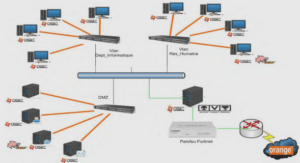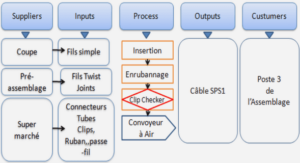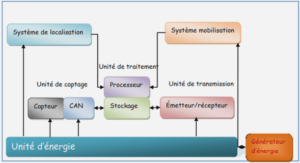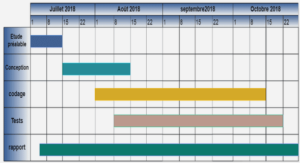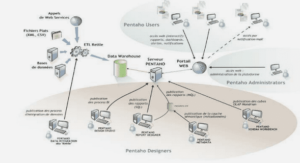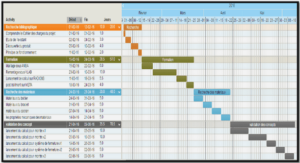DEVELOPMENTAL MODULARITY AND SALTA TORY ONTOGENY IN THE LATE DEVONIAN OSTEOLEPIFORM EUSTHENOPTERON
New data and new methods on an old problem: the choana revisited
For the past 20 years, numerous controversies have challenged sarcopterygian systematics. Reasons for these inconsistencies are related to the material itself (e.g., rarity of specimens, incompleteness of fossils, poor fossil preservation) or to methodological considerations (e.g., different approaches, selection of taxa, selection and homology of characters). Until recently, hypotheses of sarcopterygian interrelationships greatly vary among authors (see Schultze 1991). The proposed tetrapod sister-group, for instance, was successively interpreted as the dipnoans (Rosen et al. 1981), osteolepiforms (Schultze 1987, Panchen and Smithson 1987) and elpistostegalians (Cloutier and Ahlberg 1996, Zhu and Schultze 2001).
Most recent phylogenetic analyses of sarcopterygians utilize large and diversified data matrices including up to 216 characters (Zhu and Schultze 2001). Among these characters, the presence of a choana has generated special interest because of its functional interpretation related to the terrestrialization of vertebrates (J arvik 1942, Panchen 1967, Jurgens 1971). According to Schultze (1987), the choana Can be defined in two complementary ways: (1) an opening in the palate surrounded primitively by four dermal bones – the premaxiIla, maxilla, vomer and palatine – (morphological definition), and (2) a palatal opening for a pathway beginning with one opening outside the mouth, the external naris (in tetrapods, the pathway for air, with the mouth closed; functional definition).
Characters related to the choana have been used to diagnose different taxa by different authors. Subtle differences concern the character definition itself as weIl as the taxonomic definition of the clades. Rosen et al. (1981 , char. 42) considered the presence of a choana as a synapomorphy of Dipnoi plus Tetrapoda, a clade that they referred to as the Choanata. In opposition, Schultze (1987, char. 42) considered the presence of the choana as a synapomorphy shared by Osteolepiforrnes, Elpistostegalia and Tetrapoda, a clade he also called the Choanata, but which excludes the Dipnoi. Vorobyeva and Schultze (1991,24) used the presence of a « choana between premaxilla, maxilla, vomer and derrnopalatine » as a synapomorphy of the Choanata (i.e., [Osteolepiforrnes + Rhizodontida + [Elpistostegalia + Tetrapoda]]). Cloutier and Ahlberg (1996, char. 48) considered the presence of a « palatal opening (choana) surrounded by premaxilla, maxilla, derrnopalatine, and vomer » as an homoplasy occurring (1) in Porolepiforrnes and (2) in Rhipidistia. The usage of Rhipidistia by Cloutier and Ahlberg (1996) inc1udes the Dipnoiformes; however, this clade is characterized by a reversaI for the choana character. In Zhu and Schultze’ s (2001 ; char. 11 3) analysis, the presence of a « palatal opening surrounded by premaxilla, maxilla, derrnopalatine and vomer » is homoplastic occuring in (1) the clade [Holoptychius + Glyptolepis] and (2) the Osteolepidida (i.e., [Osteolepiformes + [Eusthenopteron + [Elpistostegalia + Tetrapoda] ] D. In contrast to Cloutier and Ahlberg (1996) and Zhu and Schultze (2001 ), Clement (2001) mentioned that a choana is absent from porolepiforrns, a view originally expressed by Jarvik (1972). Zhu and Ahlberg (2004) recently resolved a debate concerning the origin of the choana and proposed a reconstruction of Kenichthys campbelli in which a transitional state between the posterior naris of bony fishes and the palatal choana of tetrapodomorphs is visible, breaking down the suture between the premaxilla and maxilla.
As it can be seen, no general consensus emerges from past analyses. Independently from the phylogenetic hypotheses, the occurrence of a choana in Eusthenopteron foordi is still debated. Bryant (1919), Stensio (1921,1922), Watson (1926), Holmgren and Stensio (1936) and Jarvik (1937, 1942, 1980) described a choana in Efoordi (« internaI nares » of Bryant, « fenestra exochoanalis » of Jarvik). But in 1981 , Rosen et al. published a new description of E foordi based on four specimens from The Natural History Museum, in London (UK), one of them having been prepared with acetic acid (BMNH P. 60310). Their reconstruction differs in many points from that of Jarvik (1942), particularly by a much smaller size of the palatal opening. They argued that the foramen described as a choana by Jarvik (1942) was not such a structure according to the functional definition and they suggested three hypotheses for its use: (1) a part of a mobile joint between the snout and the cheek/palate unit, (2) a duct for nerves and blood vessels, and (3 ) a pit to accommodate a coronoid fang during mouth occlusion. Furthermore, Chang (1991 , p.ll ) reviewed Jarvik’s interpretation of the choana in two specimens (SMNH P.341 and P.222) and suggested that « the only « rhipidistian » that might have possessed a passage between the nasal and mouth cavities is Eusthenopteron foordi , but as Rosen et al. (198 1) pointed out, its presence is questionable. » In fact, she favoured Rosen et al. ‘s interpretation of a mobile articulation between the palatoquadrate-cheek unit and the snout.
Since the publication of Rosen et al. (1981), numerous critics have been published to demonstrate the presence of a choana in osteolepiforms and its absence in dipnoans (Schultze 198 1, 1987, 1991 , Jarvik 1981 , Campbell and Barwick 1984, Holmes 1985, Panchen and Smithson 1987), but new material of E foordi has never been prepared and studied. The number of specimens of E. foordi now exceeds 2100 specimens (Parent and Cloutier 1996, Cloutier et al. 1997) and new specimens are discovered every year by the personnel of the Parc National de Miguasha. Evidently, a small number of specimens display choanal characteristics. Previous methods for examination of fossils, such as seriaI grounding for Jarvik (1942) or acid preparation for Rosen et al. (1981), have been criticized for their potential destructive effects and the possibility of « generating » artiticial choanas.
Here we report the tirst results of examination of new specimens since 1981 , using CT scan on four three-dimensional skulls, a non-invasive method to study internaI morphology.
|
Table des matières
LISTE DES TABLEAUX
LISTE DES FIGURES
INTRODUCTION GÉNÉRALE
RÉFÉRENCES
REMERCIEMENTS
CHAPITRE 1
NEW DATA AND NEW METHODS ON AN OLD PROBLEM: THE CHOANA
REVISITED
ABSTRACT
RÉSUMÉ
INTRODUCTION
MATERIAL AND METHODS
RESULTS
Phylogenetic analyses
DISCUSSION
ACKNOWLEDGEMENTS
REFERENCES
Tables
Figures
CHAPITRE 2
DEVELOPMENTAL MODULARITY AND SALTA TORY ONTOGENY IN THE LATE DEVONIAN OSTEOLEPIFORM EUSTHENOPTERON
FOORDI
ABSTRACT
RÉSUMÉ
INTRODUCTION
MATERIAL AND METHODS
Specimens
Sequence of ossification
Measurements
Bane terminology
RESULTS
Skull
Sequences of ossification of the fins
Pectoral fins
Pelvic fins
First dorsal fin
Second dorsal fin
Analfin
Vertebral column and caudal fin
Disparity and reliability of the sequence
Relative arder of ossification of the fins
Basal seules
Lepidotriehia
Ontogenelie palhway
DISCUSSION
CONCLUSION
ACKNOWLEDGMENTS
REFERENCES
Tables
Figures
CONCLUSION GÉNÉRALE
![]() Télécharger le rapport complet
Télécharger le rapport complet

